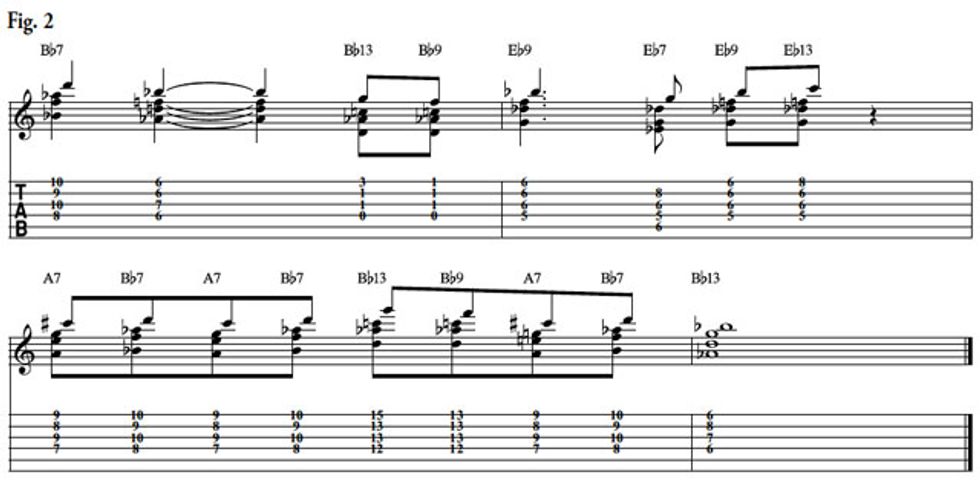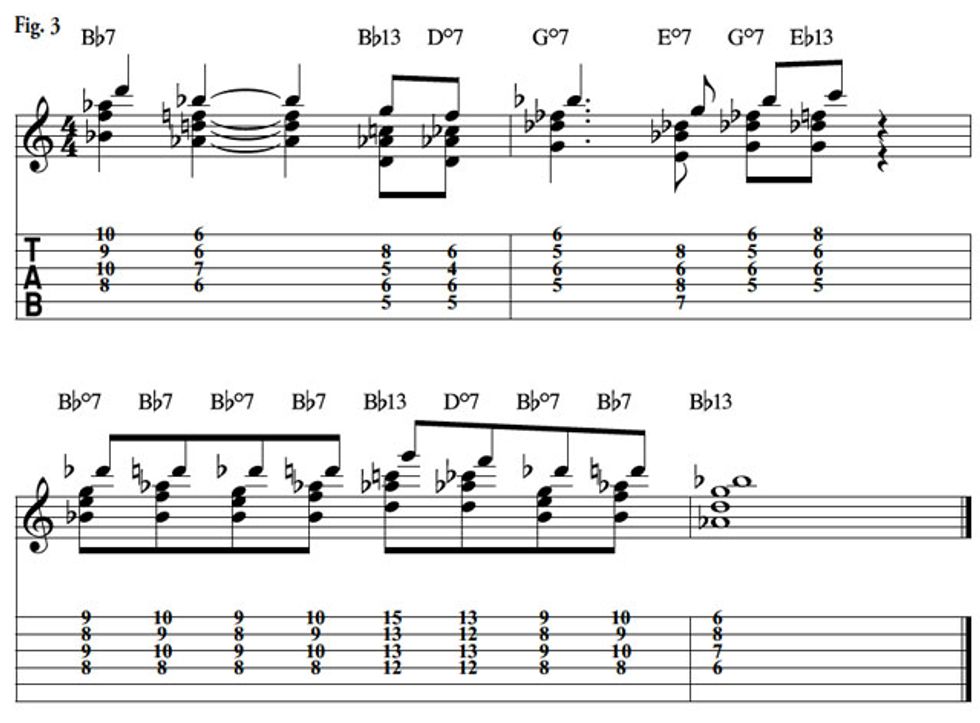The first time I heard Wes
Montgomery, I was struck by
three things: his melodic sensibility,
his use of octaves, and how he
played solos using chords. This latter
technique allowed Wes to make the
guitar sound almost like a big band.
Let’s examine several important
elements of this block-chord technique,
starting with two important
considerations: First, we’ll limit
ourselves to playing chords on four
adjacent strings (string sets 1-4 or 2-5
work best). Second, all our harmonic
choices will be dictated by the melody.


Take the basic melody in Fig. 1. If I were to take that same melody and apply a block-chord soloing approach I might end up with Fig. 2. You’ll notice that the melody remains the same and the chords I chose lie on the four adjacent strings. The melody is very diatonic and the only chromaticism occurs in measure 3, where the same chord structure moves chromatically to harmonize the melody from A7 to Bb7. Wes often used this device in his solos.
Download Example Audio 1...
Download Example Audio 2...
Wes was also fond of substituting a diminished 7th chord for a dominant 7th chord. In this type of substitution, you can replace a dominant 7 with a diminished 7 in four ways: You can substitute a diminished 7th chord rooted off the dominant 7th’s 3, 5, and b7, or plant a diminished 7 a half-step above the root of the dominant 7th chord.
For example, if you have a Bb7, you can use a Ddim7 (from the 3), Fdim7 (from the 5), Abdim7 (from the b7), or substitute a Cbdim7 (which is rooted a half-step higher than Bb7) for the dominant 7th chord. The main reason this works is that regardless of which diminished 7th chord you’re playing, the 3 and b7 of the Bb7 are always present. The 3 (D) and b7 (Ab) are known as guide tones, and these are the defining tones of any dominant 7th chord. When you use this substitution, the sonority you create is Bb7(b9).
In Fig. 3, I’ve taken the same melody and used the diminished 7 to substitute for the dominant 7 as described above. As you play through this, notice the rich sound that results from using these diminished chords. Also, in measure 2, notice how you can take parallel diminished chord structures and move them along the neck in minor thirds. Download Example Audio 3...

These examples are over the first four bars of the blues. Take these techniques and try to finish out an entire chorus of the blues. Listen to great Wes Montgomery recordings to better understand the sound of these concepts, and then strive to integrate them into your playing.
Tom Dempsey is a freelance jazz guitarist in New York City who has worked with such luminaries as Jack McDuff, Dave Brubeck, and Bobby McFerrin. A committed educator, Dempsey is on the faculty of Jazz at Lincoln Center, National Guitar Workshop, and the New York Jazz Academy. Learn more at www.tomdempseymusic.com.

























